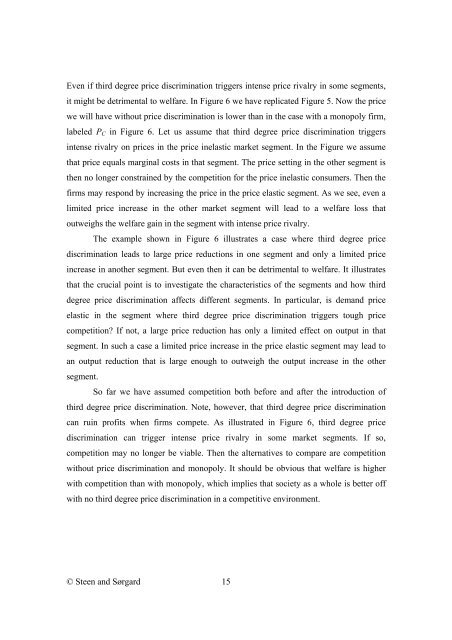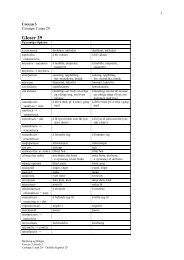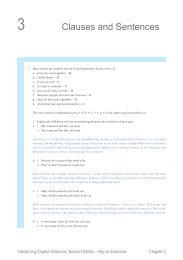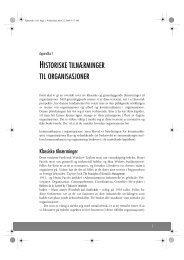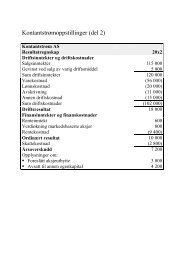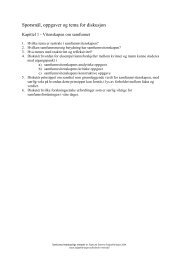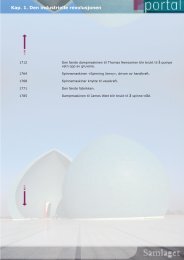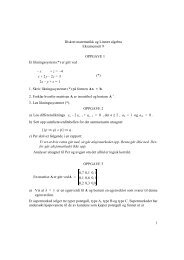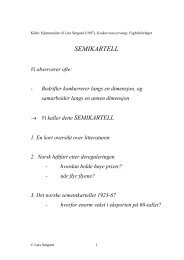price discrimination in the airline industry - Fagbokforlaget
price discrimination in the airline industry - Fagbokforlaget
price discrimination in the airline industry - Fagbokforlaget
Create successful ePaper yourself
Turn your PDF publications into a flip-book with our unique Google optimized e-Paper software.
Even if third degree <strong>price</strong> <strong>discrim<strong>in</strong>ation</strong> triggers <strong>in</strong>tense <strong>price</strong> rivalry <strong>in</strong> some segments,it might be detrimental to welfare. In Figure 6 we have replicated Figure 5. Now <strong>the</strong> <strong>price</strong>we will have without <strong>price</strong> <strong>discrim<strong>in</strong>ation</strong> is lower than <strong>in</strong> <strong>the</strong> case with a monopoly firm,labeled P C <strong>in</strong> Figure 6. Let us assume that third degree <strong>price</strong> <strong>discrim<strong>in</strong>ation</strong> triggers<strong>in</strong>tense rivalry on <strong>price</strong>s <strong>in</strong> <strong>the</strong> <strong>price</strong> <strong>in</strong>elastic market segment. In <strong>the</strong> Figure we assumethat <strong>price</strong> equals marg<strong>in</strong>al costs <strong>in</strong> that segment. The <strong>price</strong> sett<strong>in</strong>g <strong>in</strong> <strong>the</strong> o<strong>the</strong>r segment is<strong>the</strong>n no longer constra<strong>in</strong>ed by <strong>the</strong> competition for <strong>the</strong> <strong>price</strong> <strong>in</strong>elastic consumers. Then <strong>the</strong>firms may respond by <strong>in</strong>creas<strong>in</strong>g <strong>the</strong> <strong>price</strong> <strong>in</strong> <strong>the</strong> <strong>price</strong> elastic segment. As we see, even alimited <strong>price</strong> <strong>in</strong>crease <strong>in</strong> <strong>the</strong> o<strong>the</strong>r market segment will lead to a welfare loss thatoutweighs <strong>the</strong> welfare ga<strong>in</strong> <strong>in</strong> <strong>the</strong> segment with <strong>in</strong>tense <strong>price</strong> rivalry.The example shown <strong>in</strong> Figure 6 illustrates a case where third degree <strong>price</strong><strong>discrim<strong>in</strong>ation</strong> leads to large <strong>price</strong> reductions <strong>in</strong> one segment and only a limited <strong>price</strong><strong>in</strong>crease <strong>in</strong> ano<strong>the</strong>r segment. But even <strong>the</strong>n it can be detrimental to welfare. It illustratesthat <strong>the</strong> crucial po<strong>in</strong>t is to <strong>in</strong>vestigate <strong>the</strong> characteristics of <strong>the</strong> segments and how thirddegree <strong>price</strong> <strong>discrim<strong>in</strong>ation</strong> affects different segments. In particular, is demand <strong>price</strong>elastic <strong>in</strong> <strong>the</strong> segment where third degree <strong>price</strong> <strong>discrim<strong>in</strong>ation</strong> triggers tough <strong>price</strong>competition? If not, a large <strong>price</strong> reduction has only a limited effect on output <strong>in</strong> thatsegment. In such a case a limited <strong>price</strong> <strong>in</strong>crease <strong>in</strong> <strong>the</strong> <strong>price</strong> elastic segment may lead toan output reduction that is large enough to outweigh <strong>the</strong> output <strong>in</strong>crease <strong>in</strong> <strong>the</strong> o<strong>the</strong>rsegment.So far we have assumed competition both before and after <strong>the</strong> <strong>in</strong>troduction ofthird degree <strong>price</strong> <strong>discrim<strong>in</strong>ation</strong>. Note, however, that third degree <strong>price</strong> <strong>discrim<strong>in</strong>ation</strong>can ru<strong>in</strong> profits when firms compete. As illustrated <strong>in</strong> Figure 6, third degree <strong>price</strong><strong>discrim<strong>in</strong>ation</strong> can trigger <strong>in</strong>tense <strong>price</strong> rivalry <strong>in</strong> some market segments. If so,competition may no longer be viable. Then <strong>the</strong> alternatives to compare are competitionwithout <strong>price</strong> <strong>discrim<strong>in</strong>ation</strong> and monopoly. It should be obvious that welfare is higherwith competition than with monopoly, which implies that society as a whole is better offwith no third degree <strong>price</strong> <strong>discrim<strong>in</strong>ation</strong> <strong>in</strong> a competitive environment.© Steen and Sørgard 15


